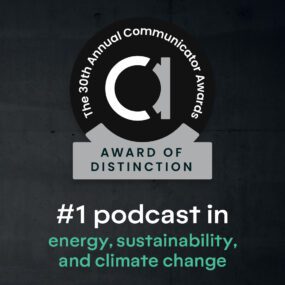Why environmental messaging isn’t connecting with utility customers
A new report from SECC shows that energy consumers are responding more to cost savings and less to environmental marketing.

A new report from SECC shows that energy consumers are responding more to cost savings and less to environmental marketing.

Sign up for our magazine
The premier outlet for compelling storytelling around the innovators and innovations driving the clean energy transition.
Utilities across the country are struggling to connect with customers, and green energy messaging isn’t helping. That’s according to Nathan Shannon, CEO and president of the Smart Energy Consumer Collaborative.
“[Consumers] are more concerned with making sure that they have enough to cover their own monthly bills,” Shannon said on the With Great Power podcast.
Messaging around greenhouse gas emissions and global warming aren’t resonating with consumers. It’s part of a larger historical disconnect.
“The customer can kind of get lost, a little bit, when you’re talking about utilities and energy,” Shannon said. “In the past, [utilities] have typically been seen as more of a monopoly. You just pay your bill once a month, and that’s it.”
Changing that relationship is the mission of SECC, a non-profit membership organization that surveys energy consumers in North America and works across the industry to share best practices in consumer engagement. SECC’s latest survey aimed to pinpoint what messaging resonates with consumers — and what messaging misses the mark.
In a 20-minute online survey, SECC asked 1,500 consumers across the U.S.about their utility’s messaging around electrification, energy efficiency, and electric rates. It also asked what messaging spurred consumers to make new or different decisions about their energy consumption.
Unsurprisingly, messaging that promised lower energy bills was the most effective with survey respondents.
“Utilities really need to understand that a lot of their consumers who may have never typically had a problem paying their energy bills or the utility bills now are struggling with that,” Shannon said. A quarter of all consumers and up to 35% of low-income consumers are struggling to pay their energy bills, he added.
But Shannon said responses also highlighted a trend he’s seen for the past few years: a waning response to environmental messaging.
Shannon pointed to green power programs, where utilities ask customers to pay a little more each month to ensure their energy comes from clean sources, as an example.. “Those really aren’t resonating,” he said, in part because consumers are unwilling to pay more each month just because something is called “green.”
“We need to do some more education and explanation around cleaner energy sources, and not just expect them to check a box,” he said.
That said, respondents said they do respond to the promise of layered benefits, such as products or services that will make their homes more comfortable, or improve air quality or reliability, while also lowering their energy bills. That’s a driver across regions and income levels.
Despite their flawed messaging, utilities have managed to maintain customers’ trust, the survey showed. Shannon wants to see utilities build on that trust to develop what he calls smart energy programs: ones that use data and digital tools to create a relationship with customers and encourage them to make cleaner energy choices.
“The opposite of smart energy is when a utility is nothing more than a faceless organization that asks for money each month,” he said.
For the full conversation with Nathan Shannon, listen to his interview on season 4 of With Great Power here.
With Great Power is a show about the people building the future grid, today. It’s a co-production of GridX and Latitude Studios. Subscribe on Apple, Spotify, or anywhere you get your shows.
Read the original article from Latitude Media here.

GridX Nabs a Communicator Award for With Great Power
With Great Power recognized for exceeding industry standards in business-to-business communications.




